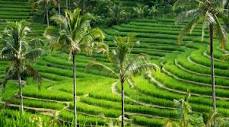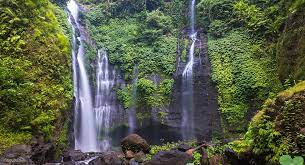Bali Terrace Rice: A Majestic Landscape that Feeds the Soul
Bali, the picturesque Indonesian island known for its stunning landscapes and vibrant culture, is home to a unique agricultural marvel: the Bali terrace rice fields. These intricately designed terraces, known as "sawah," have been cultivated for centuries and have become an iconic symbol of the island's beauty and agrarian heritage. This article explores the significance and beauty of Bali's terrace rice fields, delving into their history, cultural importance, and the sustainable farming practices that have sustained them.
Historical and Cultural Significance:
The terrace rice fields of Bali have a rich history dating back over a thousand years. The ancient Balinese, faced with limited flat land for farming, ingeniously transformed the hilly terrain into a system of terraces. This engineering feat allowed them to optimize the use of available land, harness water efficiently, and cultivate rice crops. Over time, this method of agriculture not only provided sustenance but also became an integral part of Balinese culture and spirituality. The subak, a traditional cooperative irrigation system, was established to ensure fair water distribution among farmers and maintain harmony with nature.
Aesthetic Beauty and UNESCO Recognition:
The Bali terrace rice fields are more than just a means of subsistence; they are an awe-inspiring sight to behold. With their cascading tiers, the fields create a mesmerizing panorama of lush greenery against the backdrop of Bali's volcanic mountains. The UNESCO World Heritage Committee recognized the cultural landscape of Bali's subak system in 2012, acknowledging its exceptional beauty and the community's commitment to preserving this unique agricultural practice.
Sustainable Farming Practices:
The cultivation of rice in Bali's terrace fields embraces eco-friendly and sustainable farming techniques. Farmers utilize a traditional method called "sawah biointensive," which involves organic farming, composting, and crop rotation. By working in harmony with nature, they minimize the use of chemical fertilizers and pesticides, preserving the island's natural resources and biodiversity. This sustainable approach not only safeguards the environment but also ensures the production of high-quality rice, known for its unique flavor and texture.
Balinese Rituals and Offerings:
The terrace rice fields are not only a source of livelihood but also hold deep spiritual significance for the Balinese people. Farmers perform regular rituals and ceremonies to honor the goddess of rice, Dewi Sri, and seek her blessings for abundant harvests. During these ceremonies, colorful offerings are made, and prayers are offered to express gratitude and maintain a harmonious relationship between humans and nature. Visitors to Bali can witness these rituals and gain a deeper understanding of the island's cultural and religious practices.
Tourism and Responsible Travel:
The mesmerizing beauty of the Bali terrace rice fields has attracted tourists from around the world. Travelers have the opportunity to explore these fields through organized tours or by visiting local villages. However, it is important for visitors to practice responsible tourism by respecting the environment, adhering to designated paths, and supporting the local community through responsible purchasing and cultural appreciation. By doing so, travelers can help preserve the integrity of these landscapes and contribute to the well-being of the Balinese people.
Bali's terrace rice fields are not only a remarkable feat of agricultural engineering but also a testament to the harmony between humans and nature. Their beauty and cultural significance make them a must-visit destination for travelers seeking an immersive experience in the island's rich heritage. As we appreciate the breathtaking vistas and learn from the sustainable farming practices, let us remember to protect and cherish these landscapes, ensuring that future generations can continue to be inspired by the majesty of the Bali terrace rice fields




